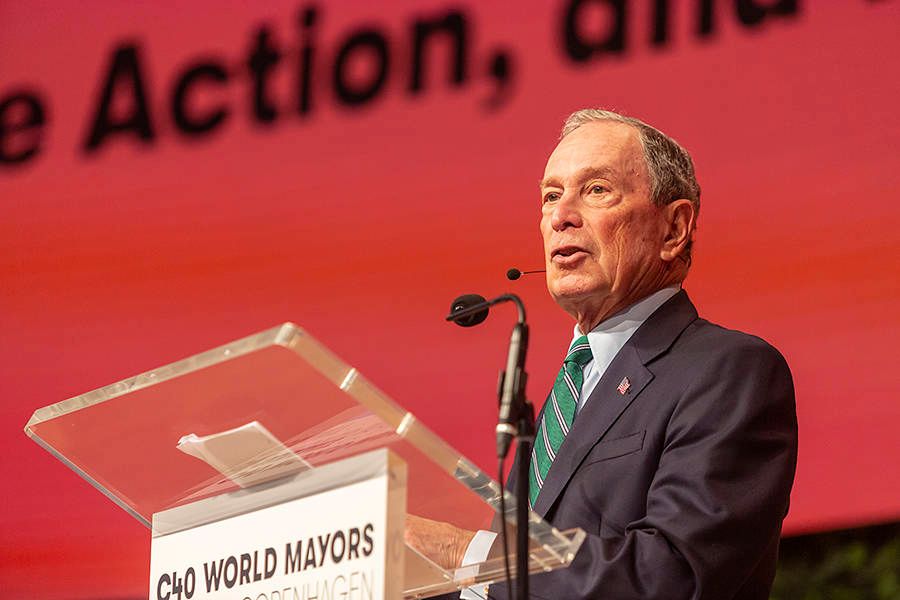Michael Bloomberg promises to halve carbon emissions in 10 years

A few minutes every morning is all you need.
Stay up to date on the world's Headlines and Human Stories. It's fun, it's factual, it's fluff-free.
Michael Bloomberg, the latest Democratic candidate for the US presidential election in 2020, has included in his campaign promise a climate plan to cut carbon emissions by at least 50% in ten years. He plans to achieve this by enforcing tougher pollution standards for new gas-fired power plants.
He has also suggested replacing coal with cleaner energy sources such as wind and solar. Wind and solar energies are widely touted as cleaner forms of energy due to their ability to be renewed and their non-polluting qualities. Coal, on the other hand, is considered non-renewable energy due to the millions of years it takes to form and long production times.
Bloomberg has joined a long line of Democrats who have promised to tackle climate change issues and move towards a green economy should they become the next US president.
A new climate plan propose
In a press conference on December 13, Bloomberg mentioned that he would start on his climate change plan by aiming for 80% clean energy by 2028. “We have to start working as hard as we can, building a 100% clean energy economy – an economic system [in] which supply chains are transformed to meet demand for low-carbon energy technologies – because the alternative is just too bad for all of us.”
The former New York City mayor is planning on setting strict pollution limits on new gas-fired plants – a major contributor to greenhouse gas emissions and thus global warming, as well as ending all subsidies for fossil fuels. Moreover, Bloomberg’s climate plan would create incentives to improve clean energy technology and invest in poor communities damaged by fossil fuel pollution, or that are struggling to transition to a cleaner energy economy.
Bloomberg has been working on bringing about a change in pollution rates for years. His campaign promise is in line with Bloomberg Philanthropies’ “Beyond Coal” campaign in collaboration with the Sierra Club, which was initiated in 2011.
Bloomberg believes that by replacing half of the coal-fired power plants in the US, the country would be able to reduce its carbon footprint by as much as 11% in the span of a decade.
“I teamed up with the Sierra Club on a campaign called Beyond Coal. By organizing and mobilizing communities affected by the harmful pollution of coal-fired power plants, we have helped close more than half the nation’s plants – 285 out of 530 – and replaced them with cleaner and cheaper energy. That was the single biggest reason the US has been able to reduce its carbon footprint by 11% – and cut deaths from coal power plants from 13,000 to 3,000,” said Bloomberg in a press conference in March.
Why is coal still being used as a major energy source?
Despite Bloomberg’s claims that he has helped close more than half the nation’s dirty coal plants, AP reports that it was, in fact, major market forces that have brought down the coal industry in recent years.
According to the US Energy Information Administration (EIA), American coal production has been dropping since 2009 due to a boom in oil and shale gas which has made natural gas more affordable, as well as wind and solar energy prices dropping due to technology advancement in these sectors.
The United States has the world’s largest coal reserves which are able to last more than 20 years, claims the United States Department of Energy. According to the department, the country has more coal which can be mined as compared to oil that can be pumped from the ground on the entire globe.
Coal is currently mined in 25 out of 50 states and it is used mainly to generate electricity. For instance, a stove and a refrigerator each use half a ton (453.59 kg) of coal per annum. Coal was first used in 1881 and by 1961, it became the major source of electricity for households.
[article_ad]




Comments ()